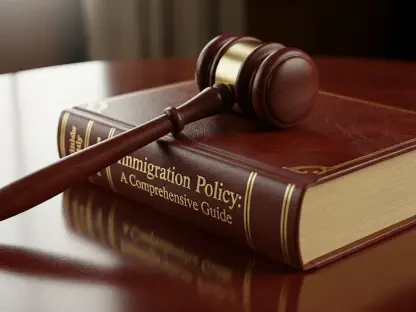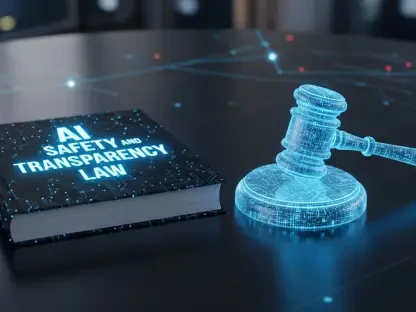In the heart of the nation’s capital, an alarming spike in high-profile violent incidents has reignited a fierce debate over public safety, stirring concern among residents and officials alike. Imagine walking through the iconic streets near the National Mall, only to hear of another assault or crime shattering the sense of security in a city that symbolizes American governance. This pressing issue has prompted the Trump administration to deploy federal forces in an unprecedented operation to combat violent crime in Washington, D.C. The purpose of this roundup is to gather diverse opinions, insights, and analyses from various stakeholders—ranging from policymakers to local law enforcement and community advocates—to assess whether this federal intervention can truly address the safety concerns plaguing the city or if it risks deepening existing tensions.
Examining the Federal Push into D.C.’s Safety Crisis
Why Federal Forces Are Stepping In
The catalyst for this significant federal deployment stems from a widely publicized assault on a former government staffer, which fueled President Trump’s call for a stronger law enforcement presence. White House statements emphasize an urgent need to restore order in a city seen as a national symbol, with rhetoric on social media platforms highlighting a determination to prevent further violence. The executive order titled “Making the District of Columbia Safe and Beautiful” underlines a mission not just to curb crime but to reshape public spaces through actions like clearing homeless encampments.
Differing perspectives emerge on the intent behind this move. Some policy analysts argue that the operation serves as a political statement, timed to project strength and authority amid public outcry over safety. Others, particularly those aligned with the administration, insist that the intervention targets genuine threats, pointing to persistent narratives of violence that unsettle residents and visitors alike. This divide raises questions about whether the focus is on addressing systemic issues or crafting a visible response for political gain.
A third viewpoint from community safety advocates suggests that while the urgency is understandable, the approach might overlook deeper root causes like economic disparity or inadequate local resources. This perspective warns that without tackling these underlying factors, federal forces may only offer a temporary fix, leaving the city vulnerable once the operation concludes. The debate over intent thus sets a complex stage for evaluating the deployment’s potential impact.
How the Seven-Day Security Surge Operates
Details of the federal operation reveal a broad and intensive effort involving multiple agencies such as the FBI, U.S. Marshals, and D.C. National Guard. Targeting tourist-heavy zones and known crime hotspots, the plan includes highly visible marked units to deter criminal activity over a seven-day period, with the possibility of extension. The scope extends beyond traditional policing to include arresting undocumented immigrants and addressing homelessness in key areas like parks and public landmarks.
Reactions to the logistics vary among observers. Law enforcement veterans note that the visibility of federal units could reassure the public and discourage crime, but they caution that the short-term nature of the surge might limit lasting effects. Concerns also arise about the potential for overreach, as the wide-ranging mandate could strain relations with communities already wary of heavy-handed tactics. This balance between deterrence and public trust remains a critical point of contention.
Urban policy experts weigh in with a different angle, highlighting the challenge of coordinating such a large-scale operation in a condensed timeframe. They suggest that without clear metrics for success or plans for sustainability, the effort risks being seen as a symbolic gesture rather than a strategic solution. These logistical critiques underscore the need for a well-defined exit strategy to ensure the operation does not create more problems than it solves.
Navigating Federal and Local Power Dynamics
Tensions between federal and local authorities form a significant undercurrent in this initiative. Despite Mayor Bowser’s approval of the federal request, coordination with the Metropolitan Police Department (MPD) appears minimal, raising concerns about operational harmony. Local law enforcement sources express frustration over unclear communication, fearing that overlapping efforts could lead to confusion on the ground.
Congressional funding decisions add another layer of complexity, as the MPD faces constraints like hiring freezes and overtime restrictions due to budget cuts. Some local officials argue that these limitations necessitate federal support, yet they remain uneasy about ceding control to outside forces. This jurisdictional friction prompts questions about whether federal intervention strengthens or undermines the city’s ability to manage its own safety challenges.
Community leaders offer a contrasting perspective, emphasizing that federal involvement could erode trust if not paired with local input. They advocate for a collaborative model where federal resources bolster rather than bypass existing structures, pointing out that D.C.’s unique governance as a federal district already complicates accountability. This clash of authority highlights a broader struggle over who ultimately shapes the capital’s safety policies.
Crime Realities Versus Public Fear in D.C.
A striking disconnect exists between recent crime data and the narrative driving federal action. D.C. police statistics indicate a notable decline in violent crime, with assaults down by 19%, robberies reduced by 39%, and homicides decreased by 12% compared to last year. These figures suggest a city on a path to improvement, challenging the portrayal of rampant violence often cited by administration officials.
However, voices from the justice system, including perspectives from the U.S. Attorney’s office, focus on a perceived rise in youth violence, with caseloads reportedly increasing dramatically over recent years. High-profile incidents, such as attacks on public transportation or near government buildings, sustain public fear and political urgency, even as broader trends show progress. This contrast fuels a debate over whether policy should be guided by data or by the emotional impact of specific events.
Safety advocates argue that this perception gap could skew future strategies, potentially diverting resources from prevention programs to reactive measures. They stress the importance of transparent communication about crime trends to align public understanding with reality, warning that fear-driven policies might alienate communities rather than protect them. Bridging this divide remains a pivotal challenge for both federal and local leaders.
Distilling Diverse Insights on Federal Involvement
Synthesizing the range of opinions, several key takeaways emerge from this federal surge in D.C. The urgency of the response, driven by a specific violent incident and broader safety concerns, reflects a shared desire to protect the capital, though motivations vary between genuine security needs and political optics. Operational challenges, including the short-term scope and limited local collaboration, are widely acknowledged as potential hurdles to lasting impact.
Differing views on crime data versus public perception also stand out, with some stakeholders prioritizing statistical declines while others focus on high-visibility incidents that shape public opinion. Community and policy voices alike call for better integration between federal and local efforts, suggesting that clearer communication channels and sustained funding for the MPD could enhance outcomes. These insights reveal a multifaceted issue where no single perspective fully captures the complexity at hand.
A practical consensus points toward balancing immediate action with long-term planning. While the federal presence may deter crime temporarily, many argue that without addressing systemic issues like funding shortfalls or social inequities, the underlying drivers of violence will persist. This roundup of opinions underscores the need for a holistic approach that considers both the optics of safety and the realities of governance in a unique city like D.C.
Reflecting on the Path Forward for D.C. Safety
Looking back on the discussions surrounding federal intervention in Washington, D.C., it becomes evident that the deployment sparked a vital conversation about public safety in a city of national significance. The varied opinions—from administration urgency to local frustrations and data-driven critiques—paint a picture of a complex challenge with no easy answers. Each perspective contributes to a deeper understanding of the stakes involved.
Moving forward, actionable steps emerge as critical for progress. Establishing formal collaboration frameworks between federal agencies and the MPD could mitigate operational friction, while investing in local law enforcement capacity might offer a more sustainable solution. Additionally, public education campaigns about actual crime trends could help align perception with reality, fostering trust over fear.
As a next consideration, stakeholders are encouraged to explore pilot programs that blend federal resources with community-led initiatives, ensuring that safety measures respect local voices. Further reading on D.C.’s unique jurisdictional challenges and national crime policy debates could provide valuable context for those seeking to engage with this issue. These steps represent a pathway to not just curb violence but to build a resilient framework for the capital’s future security.









